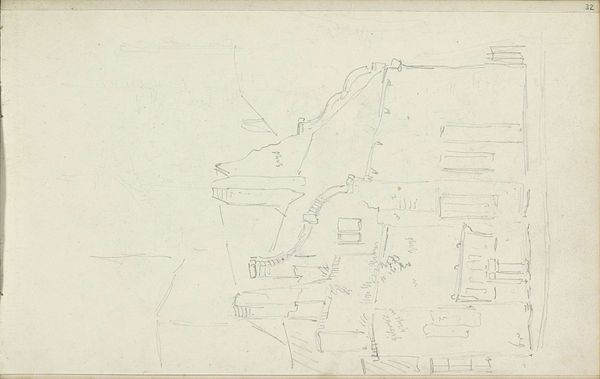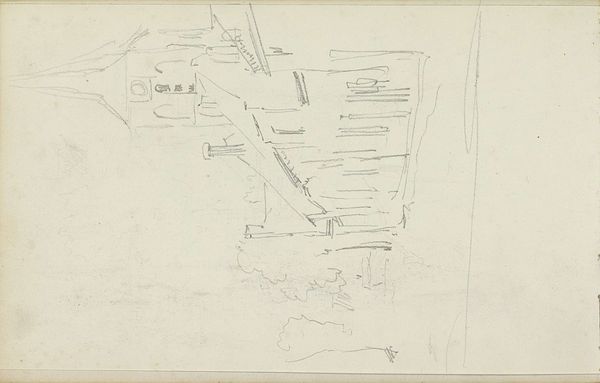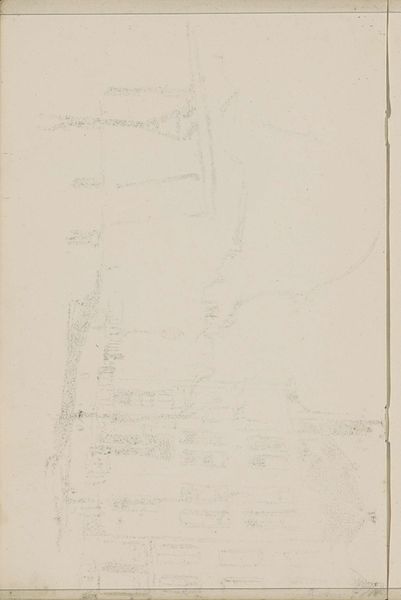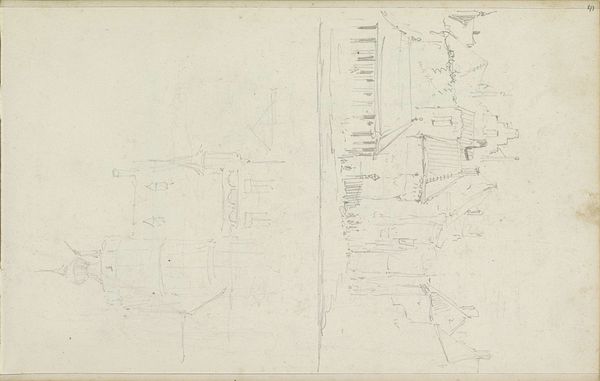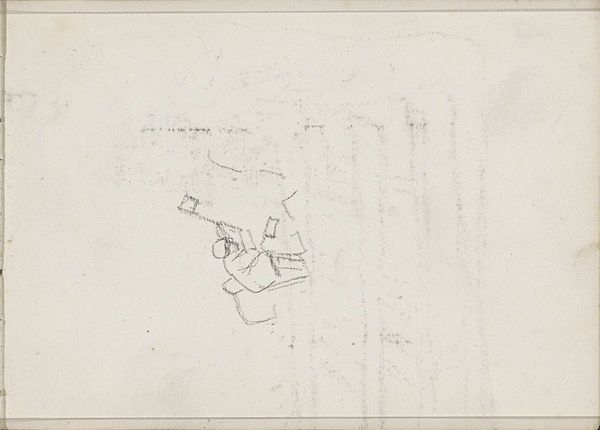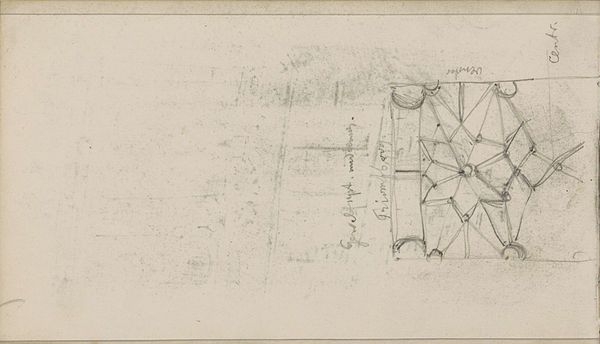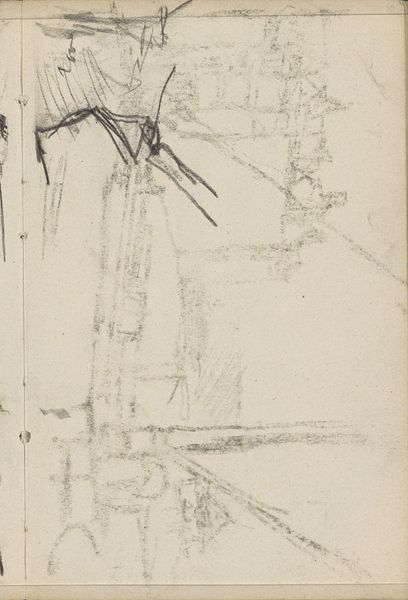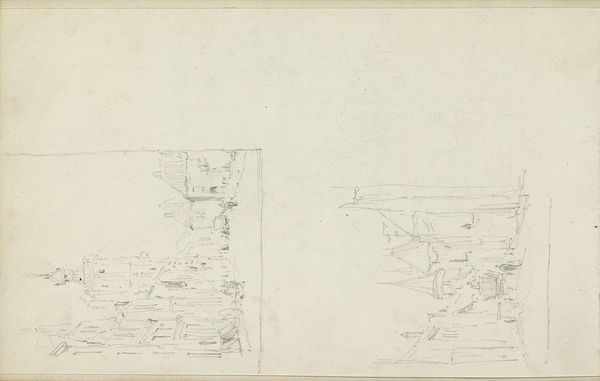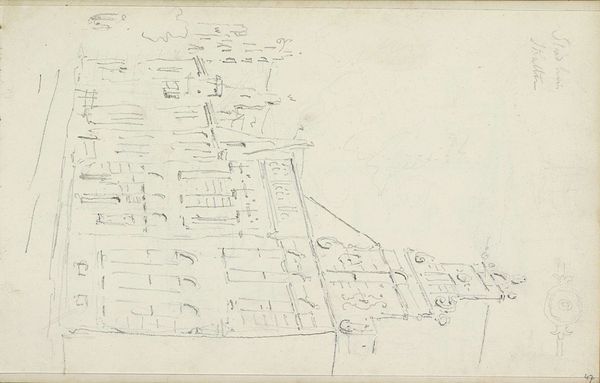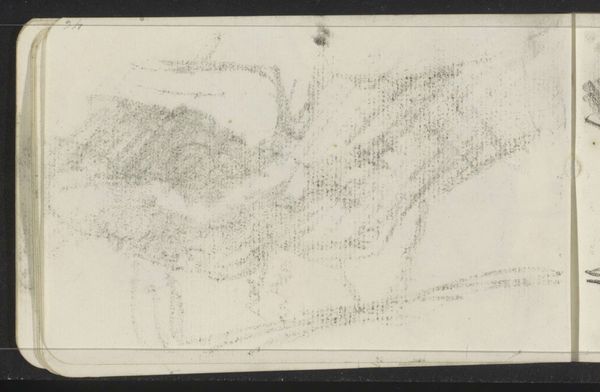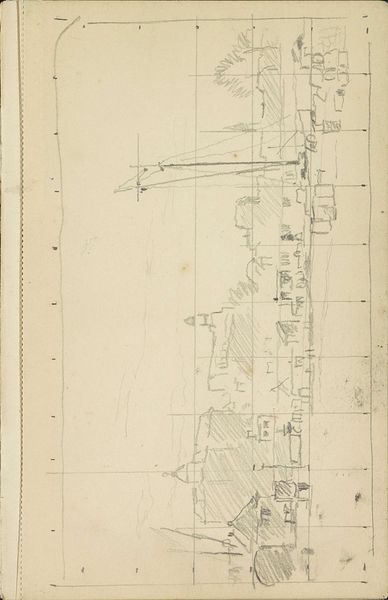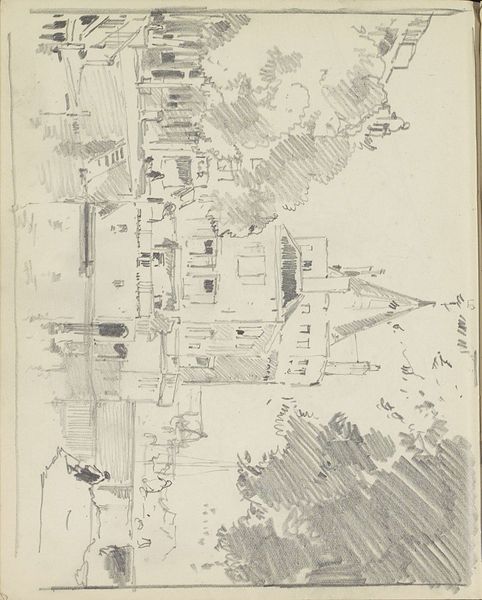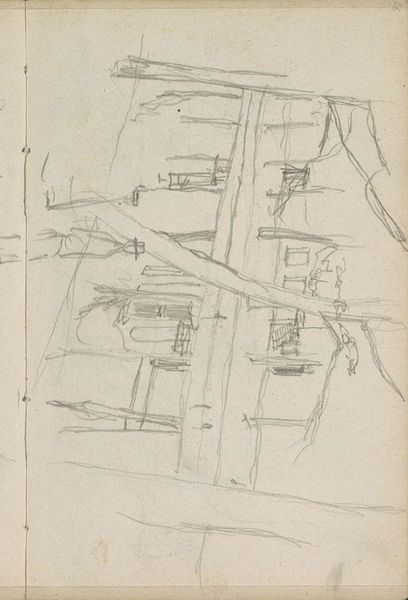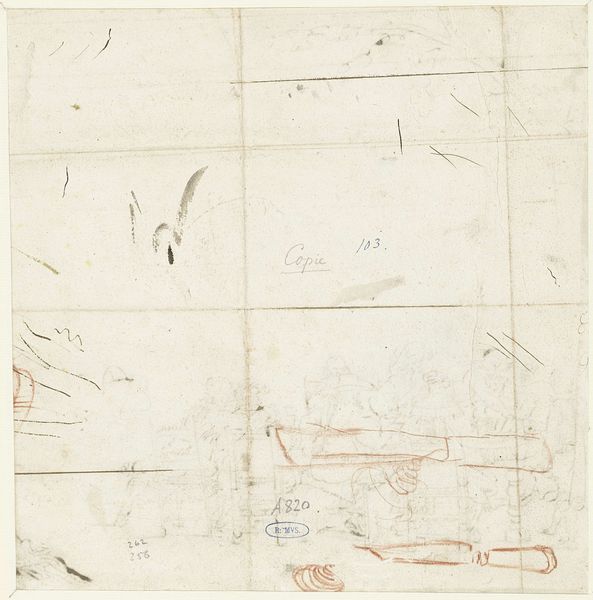
drawing, pencil, architecture
#
architectural sketch
#
drawing
#
amateur sketch
#
aged paper
#
toned paper
#
incomplete sketchy
#
landscape
#
personal sketchbook
#
idea generation sketch
#
sketchwork
#
geometric
#
pencil
#
sketchbook drawing
#
sketchbook art
#
architecture
#
realism
Copyright: Rijks Museum: Open Domain
Curator: Well, I'm immediately drawn to the aged paper itself—the tone feels so fragile, almost like holding a whisper of the past. Editor: Indeed. What we're looking at is a pencil drawing titled "Gezicht op de Bovenkerk te Kampen," or "View of the Bovenkerk in Kampen." It's attributed to Adrianus Eversen and believed to have been created sometime between 1828 and 1897. Curator: It certainly feels like a preliminary sketch. An idea in nascent form, you know? All those geometric shapes implying a grand structure, it feels so… suggestive. I wonder what significance that church had for Eversen, why capture it? Editor: Churches, as prominent architectural features, often symbolized the strength and continuity of the community. Eversen likely wasn't just capturing a building, but perhaps a feeling, a connection to the town of Kampen. Think of how deeply embedded religious architecture often is within a city's consciousness, representing permanence but the pencil gives the drawing vulnerability and a more fragile relationship with a historic past. Curator: It's interesting, the incompleteness of the sketch amplifies this sense of impermanence you mention, actually. It's like a memory fading at the edges. This building would have meant one thing to him, a mid 19th century Dutchman, versus its contemporary symbolic meanings and place in our globalized world today. A site like that building in our globalized world today is not necessarily just an active religious location but potentially more for many, including this artist: a relic or touristic attraction, maybe a subject to document rather than directly revere. What do you make of that? Editor: That resonates, especially as our notions of public space continue to evolve. Now, one might wonder if Eversen had fully considered these symbolic tensions at the time—such questioning reflects modern critical engagement rather than necessarily the immediate intent of the artwork at its creation. What I find personally appealing is the unassuming way in which this study communicates with us today despite a vast historical divergence. Curator: So beautifully put. In this drawing, there's a compelling link between our cultural inheritance and the artistic process. Thank you. Editor: A wonderful piece to consider, and as always, such an invigorating conversation.
Comments
No comments
Be the first to comment and join the conversation on the ultimate creative platform.
